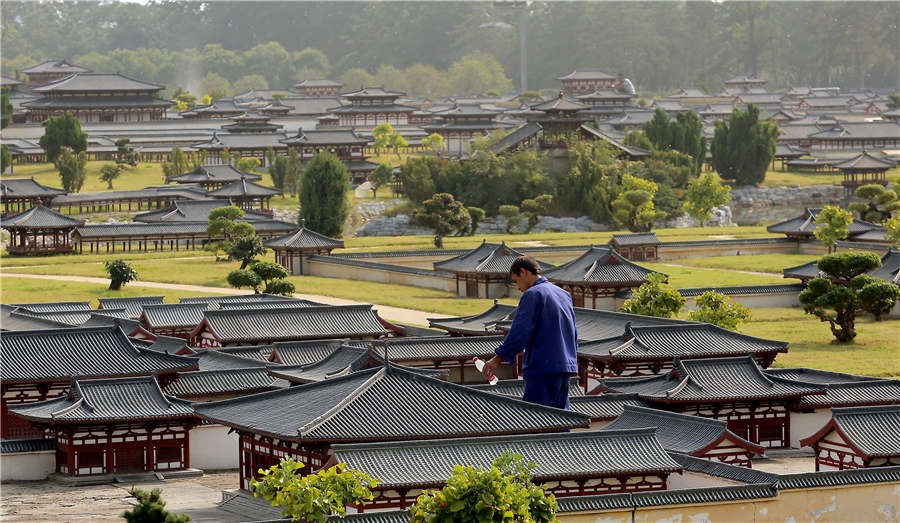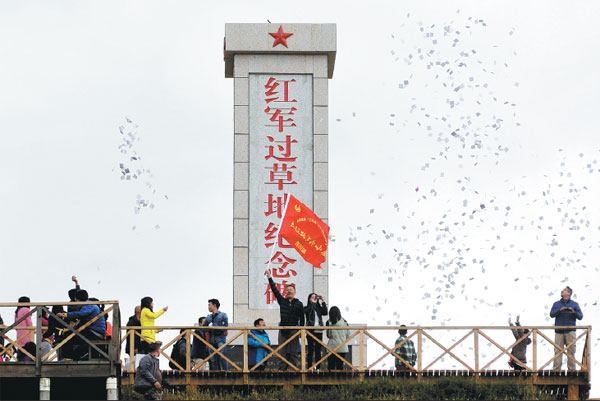Foreign eyes offer new view of the Long March
Updated: 2016-09-28 08:02
By Liu Jing(China Daily)
|
||||||||
|
|
Eighty years after the end of the Chinese Red Army's epic expedition, the mass migration is still capable of stirring the hearts of millions across the globe, Liu Jing reports from Huaihua, Hunan province.
In October 1934, hundreds of thousands of Red Army soldiers set out on the Long March, a strategic shift from the forces of the Kuomintang, or Nationalists.

After two grueling years spent trekking through inhospitable countryside, the troops and their followers arrived at Yan'an in Northwest China's Shaanxi province, which would be their base for the next few years.
The world largely got a glimpse of the Long March and the Communist Party of China in 1936 thanks to Edgar Snow, a journalist from the United States who spent months with the Red Army in the northwest and later wrote Red Star over China, the definitive account of the CPC's travails at the time.
Setting out
Since August, four China Daily reporters from overseas have been part of a larger group of journalists from more than 40 national and local news portals and platforms invited to retrace the Red Army's 12,500-km route to bring a fresh perspective to the historic event for readers worldwide.
"Before going on this trip, my knowledge regarding the Long March was no more than a few general issues," said Tyler O'Neil, during a trip to Hunan province, from where the Second Front Army of the Red Army departed for the Long March.
"Now, I have come to realize that the details are very important. I appreciate the opportunity very much," said the United States national, who also visited Long March sites in Gansu province in China's far northwest.
The foreign reporters' tour is not only designed to mark the Long March, but also to record the progress achieved by local people in recent decades. It is hosted by the Cyberspace Administration of China, the nation's internet watchdog.
By Sept 30, the group will have visited Jiangxi, Hunan, Guizhou, Sichuan, Gansu and Shaanxi - six of the 15 provinces, municipalities and autonomous regions the Red Army traversed during the march.
In addition to the six provinces featured in the main tour, the remaining nine provinces, municipalities and autonomous regions organized their own media visits to retrace the marchers' route.
- Deepest rail station coming to Badaling
- Look down if you dare: world's most vertigo-inducing glass skywalks
- Boy with leukemia overcomes lonely hospital trips, keeps studying
- Foreign eyes offer new view of the Long March
- Visitors return to old nuclear facility in Chongqing
- Great Wall's image hurt by repair work, officials say

 Real life 'Transformer' car turns into robot
Real life 'Transformer' car turns into robot
 Israel's ex-president Peres dies at 93
Israel's ex-president Peres dies at 93
 New Mao Zedong's portrait graces Tian'anmen
New Mao Zedong's portrait graces Tian'anmen
 Clinton, Trump go head to head in high stakes presidential debate
Clinton, Trump go head to head in high stakes presidential debate
 Miniature replica of Daming Palace shows craftsmanship
Miniature replica of Daming Palace shows craftsmanship
 Elderly man creates map of China with colorful rice
Elderly man creates map of China with colorful rice
 Students 'die' to get closer to each other in Hangzhou
Students 'die' to get closer to each other in Hangzhou
 Classic autos debut at Beijing Design Week
Classic autos debut at Beijing Design Week
Most Viewed
Editor's Picks

|

|

|

|

|

|
Today's Top News
Trump outlines anti-terror plan, proposing extreme vetting for immigrants
Phelps puts spotlight on cupping
US launches airstrikes against IS targets in Libya's Sirte
Ministry slams US-Korean THAAD deployment
Two police officers shot at protest in Dallas
Abe's blame game reveals his policies failing to get results
Ending wildlife trafficking must be policy priority in Asia
Effects of supply-side reform take time to be seen
US Weekly

|

|








